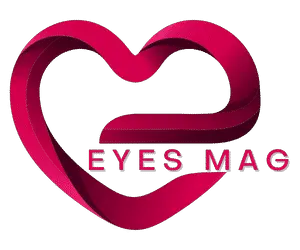Yellow Moissanite Vs Yellow Diamond – What’s the Difference?
In general, a diamond loses value as it gets closer to yellow. However, moissanite is renowned for having a very slight color. This type of stone typically has a yellowish or greenish tinge overall.
If you are thinking about buying a ring, you may be wondering whether yellow moissanite is the right choice. The answer is yes. These stones can be incredibly beautiful. If you’re interested in purchasing one for your ring, you can find a moissanite ring in rose, yellow, white, or platinum gold.
Forever Brilliant moissanite
When comparing diamonds to moissanite, it’s helpful to know that they are not completely similar. Moissanites can be made to look like diamonds, but they are often cut differently than diamonds. For example, a round brilliant cut can hide the yellow and green tints of moissanite, making the stone appear colorless. Other popular cuts for moissanites include marquise, princess, and radiant cuts.
Real Gold & Diamond Chains, Bracelets, Earrings, Rings & more. 24/7 customer support. Free fast shipping & returns.In addition to being cheaper than a diamond, moissanite also has a better resale value. Its brilliance is measured by its Refractive Index, which measures how light bends when hitting the gemstone. It has higher brilliance and fire than diamonds, making it a popular alternative for engagement rings.
Another difference between moissanite and yellow diamonds is the clarity of moissanite. A yellow diamond has an S clarity grade, and moissanite that’s D or higher will have a D color grade. Moissanite that has a high clarity grade will have a higher price tag than a diamond with the same grade.
Moissanites are generally better than diamonds at retaining their brilliance. They can resist heavy wear without losing their sparkle. Moissanite with a higher refractive index can resist more wear than a diamond. In addition, moissanite is less expensive than diamonds, so it’s a great choice for engagement rings.
Another difference between yellow diamonds and moissanite is that moissanite is a more sustainable alternative. It doesn’t need to be mined, so it’s a better choice for people concerned about the environment. Furthermore, it’s conflict-free.
Moissanite is created in a laboratory and is considered to be ethical. Unlike diamonds, moissanite has a higher refractive index and a more noticeable color. While some people find moissanite too sparkly, they can still be very eye-catching.
Moissanite has a higher refractive index than a diamond, making it 2.4 to 2.5 times more brilliant. Moissanite also has greater fire and color than a diamond, giving off a more spectacular appearance under bright lighting. In addition, it is more transparent than diamonds and can project a golden hue in certain lighting.
When comparing diamonds, it is important to consider their longevity. Moissanite has a longer life span than diamonds. Moreover, it does not experience the cloudiness that diamonds have. However, it can still become cloudy over time. If it does, it can be easily removed with a soft cloth.
While both moissanite and diamonds have their benefits, you should be aware that Moissanite is a manmade stone. It is composed of silicon and carbon, which is why they are both rare. Moissanite is more durable than diamond and can survive in high temperatures. Moissanite can survive a fire more than a diamond.
Moissanite is very durable and does not scratch. Moissanite has a Mohs hardness of 9.25, which is almost equivalent to that of diamonds. Its durability and resistance to heat also make it a better choice for engagement rings than diamonds.
Forever Brilliant colorless moissanite
A Forever Brilliant colorless moissanite is a natural stone that displays up to 10% more brilliance and fire than a diamond. It also has exceptional hardness and toughness. It has a hardness rating of 9.25 on the Mohs scale, making it harder than a sapphire or ruby. Diamonds, on the other hand, are the hardest known mineral, rated at 10.

The Forever Brilliant colorless moissanite is significantly more white than conventional moissanite, scoring up to four grades whiter. This is because moissanite does not appear to be officially graded on the GIA’s color scale. On this scale, conventional moissanite would be graded as a “J” or “K” whereas a Forever Brilliant would be graded at an “H”.
Moissanite also has a higher refractive index than diamonds, a number that measures how light travels through different materials. Its refractive index is 2.65, while that of a diamond is 2.42. While these two stones have similar refractive indices, moissanite reflects colored light better than diamonds. In some cases, they even emit a golden hue in certain lighting.
Moissanite is an inexpensive alternative to diamonds. It is clear, hard, and bright and gives off a unique fire and shine. Unlike diamonds, however, it is not as expensive as a diamond and is considered a better choice.
The Forever Brilliant moissanite is slightly more colorless than conventional manmade moissanite. This means that it is slightly more translucent than diamonds. Its color is comparable to that of a diamond of comparable carat weight. A Forever Brilliant is approximately G to me in color, while a Forever Classic moissanite is closer to J to K in color.
Real Gold & Diamond Chains, Bracelets, Earrings, Rings & more. 24/7 customer support. Free fast shipping & returns. Although moissanite is not natural, some people value its ethically created nature. Moissanite is a laboratory-created stone with a high refractive index and a noticeable level of color. Its high brilliance is a drawback for some people, however, as the stones are unnaturally sparkly.
One big advantage of a Moissanite gemstone over a Diamond is its durability. The Moissanite gemstone is resistant to stains, grease, and dirt. It also retains its sparkle for longer, and it is less prone to fading. Moreover, its higher refractive index helps it retain its sparkle between cleanings.
Moissanite is more affordable than diamonds. Unlike diamonds, it is produced in labs and is therefore less expensive. Moissanite can be manufactured much faster than diamonds. They are more resistant to extreme temperatures and are more resistant to fire than diamonds.


















